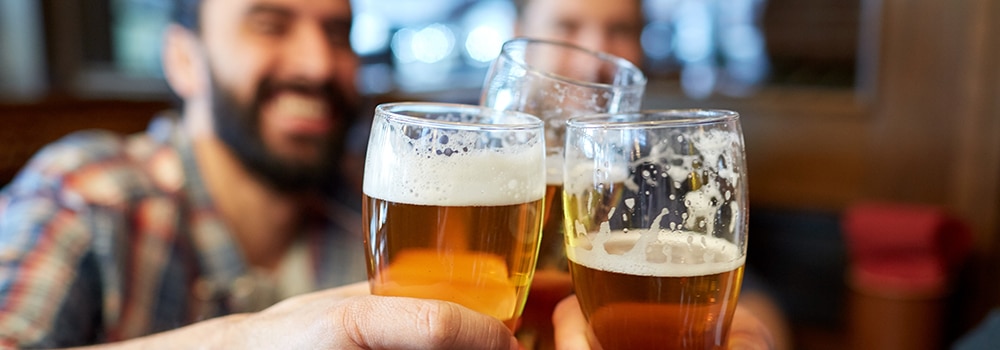Menu
Login
- SOLUTIONS
-
-
FRANCHISEES
-
FRANCHISORS
PARTNER VENDORS
-
-
-
- MARKETPLACE
- RESOURCES
- ABOUT
- SCHEDULE A DEMO
-

A burger and beer. Tacos and a margarita. These things go hand-in-hand. So it only makes sense why QSRs like Chipotle, Shake Shack, and My Burger are serving alcohol with their food selection. It's also a great business tactic. Alcohol sales have a very large profit margin, and many customers love to unwind with a drink after a long day of work. If you're thinking about jumping on the boozy bandwagon, here are some things to consider before serving alcohol at your restaurant.
Do your customers even want alcohol with their meal? Restaurants like Chipotle, who make most of their sales in the afternoon and evening, are much more likely to attract customers looking for an adult beverage than, say, Starbucks — whose customers are usually looking for a morning pick-me-up. Starbucks actually tested alcohol sales starting in 2014, but canceled the program by 2017 due to a lack of interest. Taco Bell, on the other hand, began selling alcohol at its restaurant on the Las Vegas strip — and plans to open hundreds more alcohol-selling "Cantina" locations in the future due to its large success.
Liquor laws vary by city, county, and state, so it can be difficult to manage licenses with multiple stores. There are even variances in the licenses themselves — you may want a license that exclusively allows your restaurants to sell beer, or one for beer and wine, or even one that includes hard liquor. Each license has its own price tag, and you need to be confident that your sales will exceed the cost of the license.
In most restaurants, staff must be at least 18 years old to serve alcohol. If you're thinking about adding alcohol to your menu, you'll need to schedule someone age 18 or older to serve drinks for each shift. An easy solution is to ask managers to serve alcoholic drinks when ordered.
In addition to a liquor license, many restaurants require that employees receive permits to serve alcohol. This ensures your employees understand the law when it comes to serving alcohol. Permits are usually inexpensive but need to be renewed annually. The cost of training employees and obtaining permits can add up quickly, however, it's not as expensive as paying a fee for serving a minor.
Many jurisdictions only allow alcohol sales during certain hours. In Minnesota, for example, restaurants may only sell alcohol between 8 a.m. and 2 a.m. Restaurants that are open outside of those hours need to establish procedures to ensure that employees do not sell alcohol during restricted times. Failure to do so may result in fines or a revoked liquor license.
An icy margarita pairs well with a Chipotle burrito, but not so well with a bucket of fried chicken. If you're considering adding alcohol sales to your restaurants, think about what your customers want. You really can't go wrong with beer and wine, but even that decision isn't so simple — would your customers be more likely to buy a cheap-but-reliable Corona or a more expensive local micro-brew?
Alcohol sales may not be an easy decision for your restaurant brand, but you owe it to yourself and your customers to consider the idea. If it works out, you may be looking at an increased profit for many years to come.
Delaget is the number one resource for QSR data aggregation and understanding. Smarter Wins.
PAR OPS' blog on operational strategies to grow your business faster.
Everything You Need to Know About Hiring & Retaining Teenagers During the 2021 Labor Crisis
Nickels and Dimes: 4 QSR Operational Money-Savers You Likely Haven’t Tried Yet
QSR Loss Prevention: 4 Ways to Prevent and React to Employee Theft